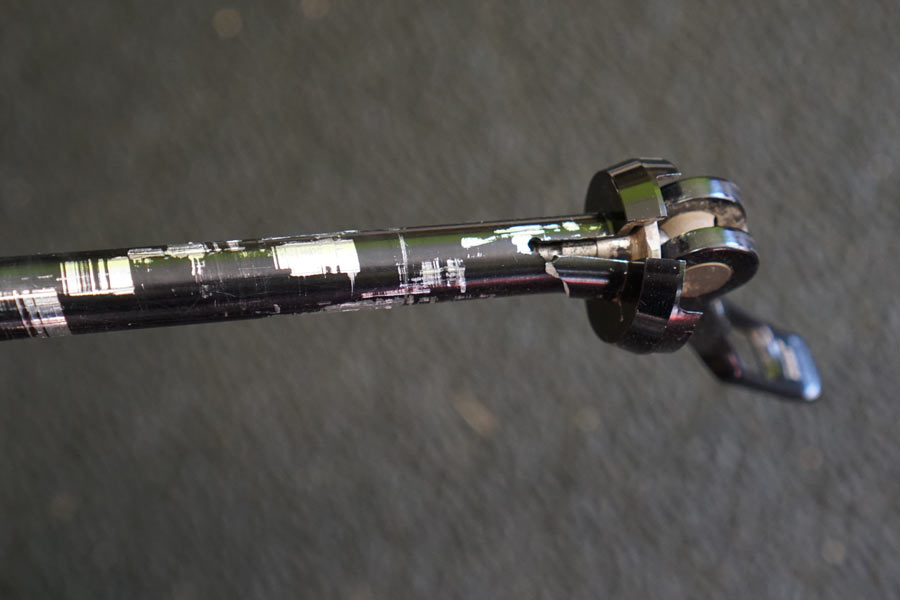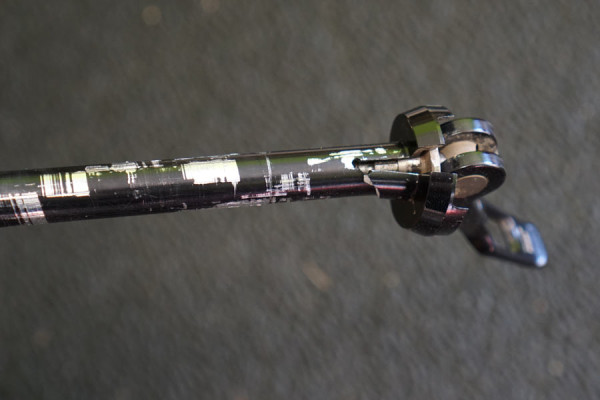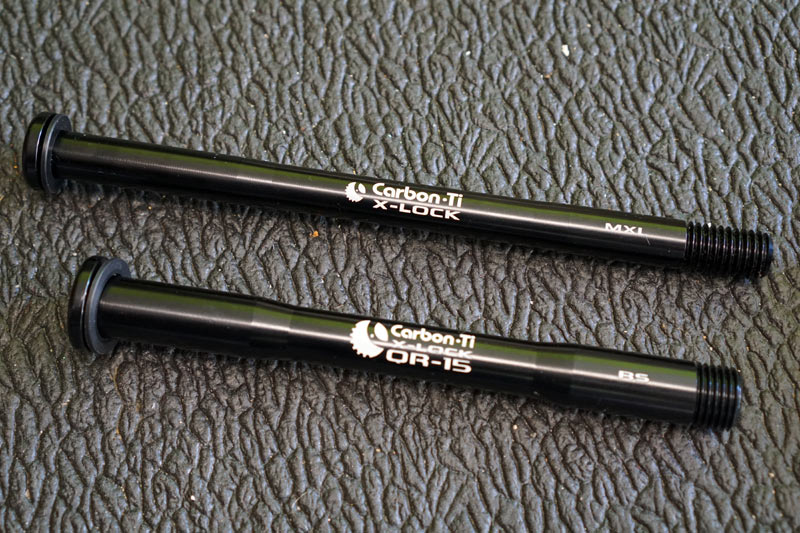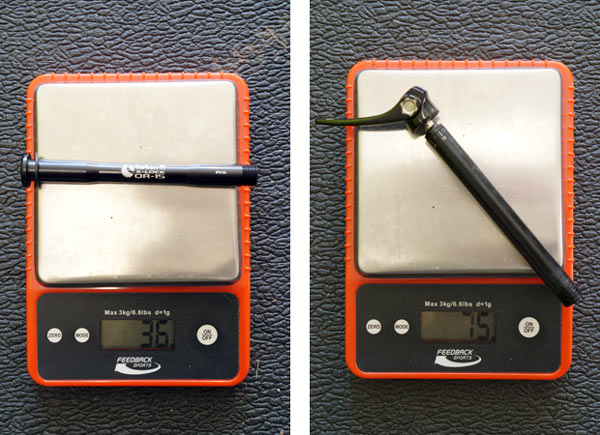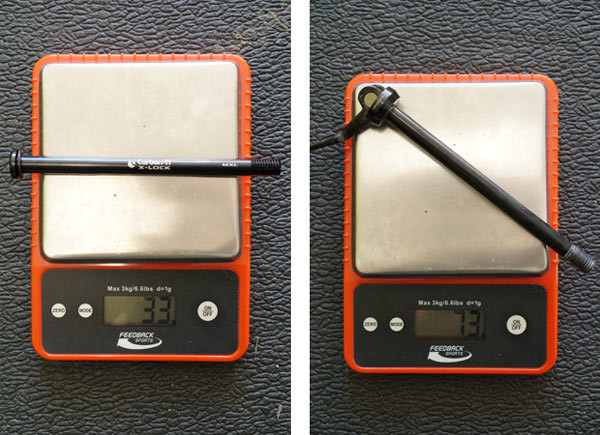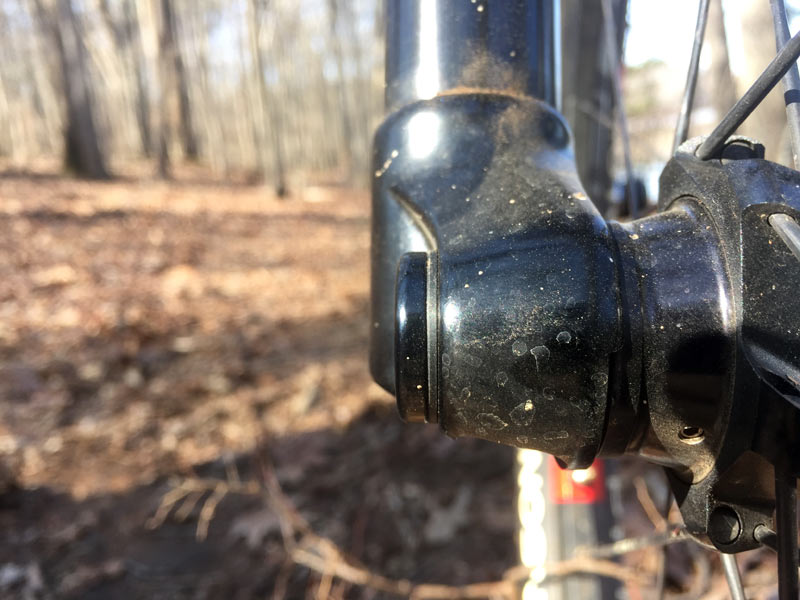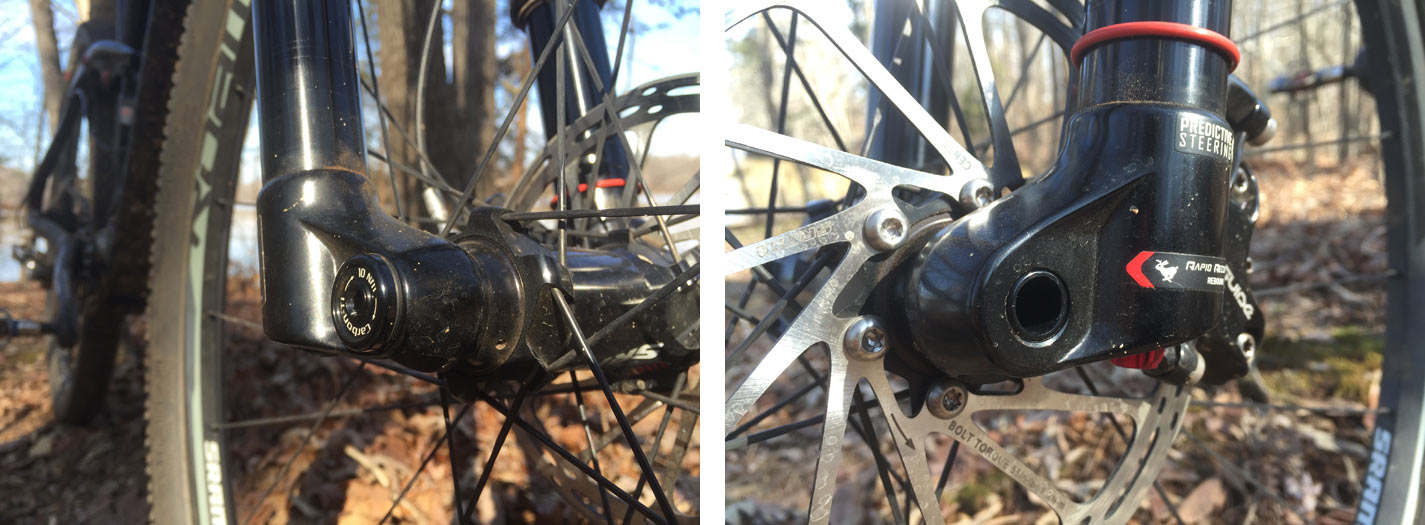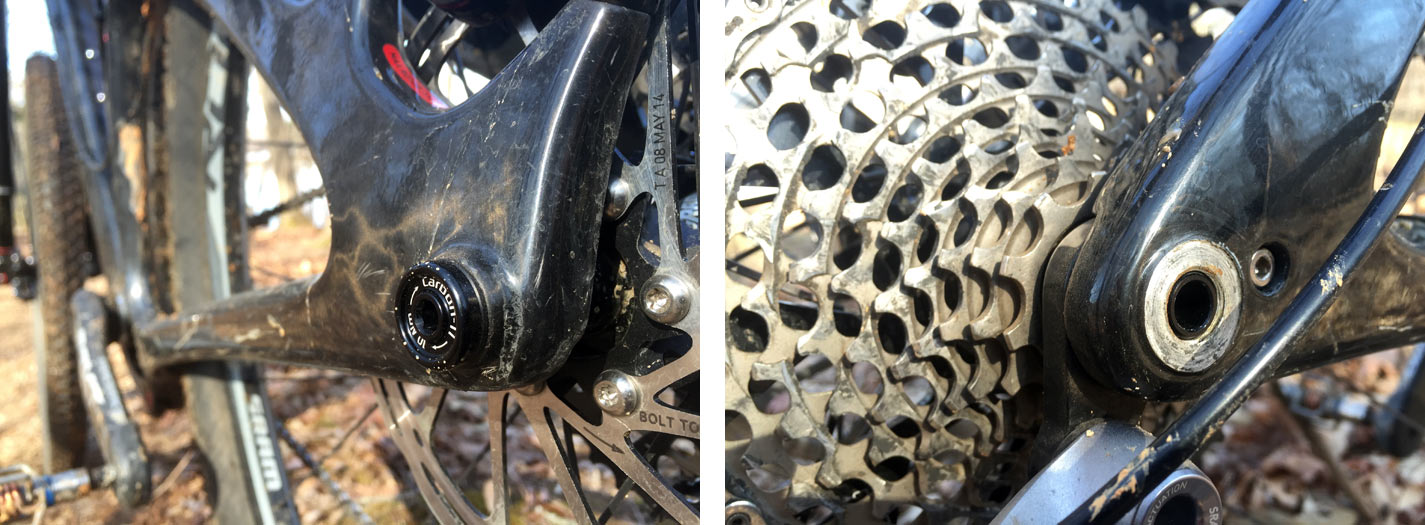My impetus for testing the Carbon-Ti X-Lock thru axles was two-fold. First, I destroyed the Maxle on my Niner, so I needed a replacement. Second, if I can shed grams with no (or negligible) loss of performance, then I’m game. After consulting with the folks at Fair Wheel Bikes, who sell several brands of lightweight tooled thru axle and skewers, Carbon-Ti was the choice. They sent the rear 142x12mm X-Lock, and Carbon-Ti provided the RS 110x15mm thru axle to fit the Rockshox RS-1 suspension fork up front.
Gram for gram, after rotating mass, reducing unsprung weight can make the most noticeable difference in a bike’s performance. As Galileo and Newton observed, an object at rest wants to stay that way, and the heavier the object, the higher the force required to move it. So, reducing the weight of anything on the lower side of your suspension will speed up its reaction time and let the springs better do their job.
So, if you’re gonna replace a thru axle, might as well use that opportunity to cut the parts’ weight almost in half…
Rockshox’s Maxle is spec’d on a huge variety of bikes. I have several of them in my own stable, and we’ve tested a great many more with that part. In most cases, they work fine. But on my Niner RIP9, there was something askew. I could have been the wheels, or a slight frame misalignment. Most likely, it was some combination of the two, but it was just enough to cause a very, very difficult insertion. That should have been enough of a warning sign, but I ignored it, hammered the axle into place and muscled the lever around and around until it was close enough to clamp it. That was fine, until it was time to remove it. And this this happened:
Assuming this ever happens to you, you’ll obviously need a replacement. Or, assuming you’re considering your options for making your bike lighter, the Carbon-Ti X-Lock alloy thru axles make a decent argument in the grams-saved-versus-dollars-spent conversation.
The X-Lock axles are made for Rockshox and Fox forks (Boost, RS-1 and Regular) and rear axles to fit Syntace X-12, Scott, E-Thru and Maxle replacements, plus Maxle Boost and 150mm. They come in red, black, gold, blue, silver and two shades of green. Retail averages €76-85 / $70-85.
Compared to the Maxle, the Carbon-Ti X-Lock saves 39g for an RS-1…
…and 40g for a rear 142×12 Maxle. That’s less than half the weight, for a savings of 79g (0.174lb) on the bike.
But the weight savings are only part of the benefit. The tooled design is also much narrower and sleeker, giving your bike a cleaner appearance and reducing the likelihood of anything snagging the dropout (or the dropout snagging a rock). The downside is you may need to pull out your mini-tool to fix a flat, which will add a couple minutes to the process.
I was concerned that a lightweight axle might have an outsized impact on a fork like the RS-1, which relies heavily on overall axle system stiffness to help keep the bottom of the fork in line. After all, the lowers spin freely and independently of each other, which is why Rockshox introduced their Torque Tube oversized axle/hubs and Torque Cap oversized endcaps. Fortunately, the Carbon-Ti axles worked fine, maintaining the RS-1’s overall stiffness. I couldn’t tell any difference between the stock Maxle and the X-Lock.
Out back, particularly on the Niner’s unified rear triangle, I didn’t have any concern about loss of stiffness.
But the smooth appearance was much appreciated. I ended up putting them on both ends of my Niner JET9 RDO and on the rear of the RIP9. For a weight savings of more than half, there are certainly more expensive ways of dropping weight. Considering there’s no loss of stiffness and a potential improvement in suspension performance, the X-Lock thru-axles are a win in my book.
Available from Fair Wheel Bikes in the USA, or direct from Carbon-Ti in Europe.
UPDATE: Rockshox’s product manager chimed in to say they’ve tested a Maxle Stealth with the RS-1 and found that it started backing out and could come loose during a ride, which is why they haven’t made one for this fork. They have not tested the Carbon-Ti model, and I have not had any issues yet, but perhaps worth checking it before riding should you upgrade.

